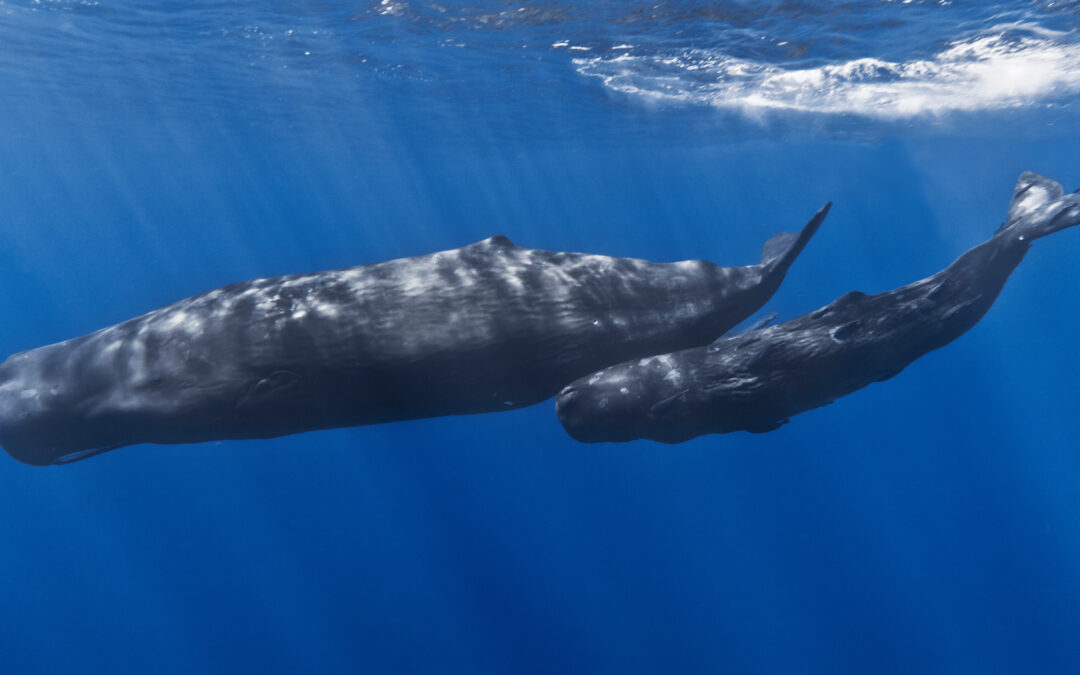Contacts:
Peter James MacCracken, APR | pjm@strategic-communications.com | (619) 275-4110
Celina Maggi | cmaggi@hswri.org | (619) 909-3449
Whale Calf Euthanized After Stranding on Florida Beach
BY JESS THOMSON
A newborn sperm whale calf has been euthanized after becoming stranded on a beach in Florida.
The young 12.5-foot calf was discovered stuck on a beach near Marineland, around 60 miles south of Jacksonville, on Wednesday afternoon.
Despite the efforts of beachgoers and members of the FWC, the Hubbs-SeaWorld Research Institute, Marineland, the Whitney Lab, the St. Johns County Sheriff’s Office, St. Johns County Fire Rescue and St. Johns County Beach Services, the whale was determined to be in too poor condition, and the decision to euthanize it was made, local media News4Jax reports.
The reason for the whale’s stranding is still unknown, but the carcass has been taken for a necropsy, which will help elucidate the cause.
Sperm whales can measure up to around 50 feet long, and are found in oceans around the world. They regularly dive to around 2,000 feet for food, spending around 45 minutes below the sea, and have on occasion been recorded spending over an hour at depths of 10,000 feet.
Sperm whales were a major target during the whaling trade, due to the large amount of spermaceti—an oily substance—inside their heads, which they use for sonar. This substance was in demand for use in oil lamps, lubricants and candles, leading to the sperm whale population tanking during the whaling era of the 19th and early 20th century.
Since the International Whaling Commission placed a moratorium on commercial whaling in 1986, the species has managed to recover somewhat, but still faces a number of threats, including entanglement in fishing gear, noise pollution, oil spills and chemicals, and collisions with boats. These factors can contribute to a whale stranding, as they may become disoriented or too weak to get back into the water.
“It is really difficult to say how common vessel strikes are with whales. Whale carcasses typically sink very quickly after death and a heavily-injured whale may quickly leave the area only to die later on,” Sarah Marley, a senior lecturer in ecology at Scotland’s Rural College, told Newsweek. “So unless the impact is directly observed by the ship crew, we don’t always know that a vessel strike has occurred. This is particularly challenging on larger vessels, where it is much harder to see the bow and propellers from on-deck.”
Vessel strikes are an especially bad problem in areas where whale migration paths meet with shipping routes, as the boats may collide with the whales as they come up to breathe.
“The amount shipping is increasing year on year, and whale populations are, at least in some places and species, also increasing as they recover from the impacts of whaling, so this is a growing problem and for some populations will be the primary source of conservation concern (for example, northern right whales),” Luke Rendell, a reader in biology and sea mammal expert at the University of St Andrews in the U.K., told Newsweek.
“While ships will maintain a lookout, this is usually for other vessels and with the support of electronic aids to navigation, to which whales are invisible. Even if ships carried a dedicated observer, it is likely that only in the calmest daylight conditions they would be able to detect animals in time for avoiding action to be taken. At night, or in bad weather, they simply cannot be seen. The size of modern commercial vessels means that in many cases crew will not even notice the impact.”
“There is good evidence that reducing vessel speed can both improve the chances of whales escaping and also reduce the severity of injuries. While the most effective would be a global speed limit for ships, the challenges in getting agreement on what it should be and in enforcing it are currently likely to be insurmountable,” Rendell said.
“However, close coordination between maritime authorities, shipping companies, and scientists who map the distribution of whales in space and time can lead to effective management using localized temporary restrictions focused where the risk of strike is highest, that is where and when the distributions of vessels and whales most coincide. More support for research in this area, and more leadership from relevant government authorities, and international bodies like the International Maritime Organisation, is needed to combat this growing problem.”
Link to Publication
https://www.newsweek.com/sperm-whale-calf-stranded-florida-beach-euthanized-1830630
###

